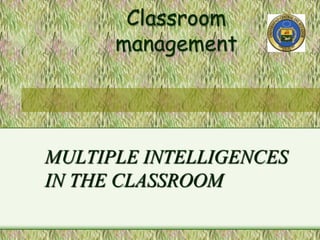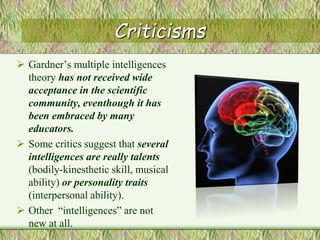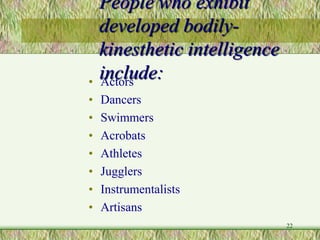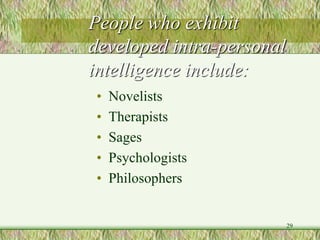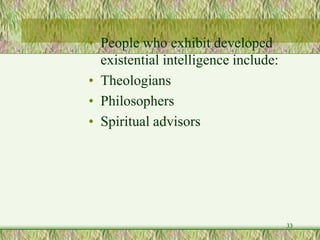This document provides information about Howard Gardner's theory of multiple intelligences and its implications for classroom teaching. It defines intelligence and discusses Gardner's view that there are at least nine distinct intelligences rather than just a single general intelligence. These include linguistic, logical-mathematical, spatial, bodily-kinesthetic, musical, interpersonal, intrapersonal, naturalist intelligences. The document also addresses criticisms of the theory, implications for teaching different learning styles, and examples of people who demonstrate each type of intelligence.
